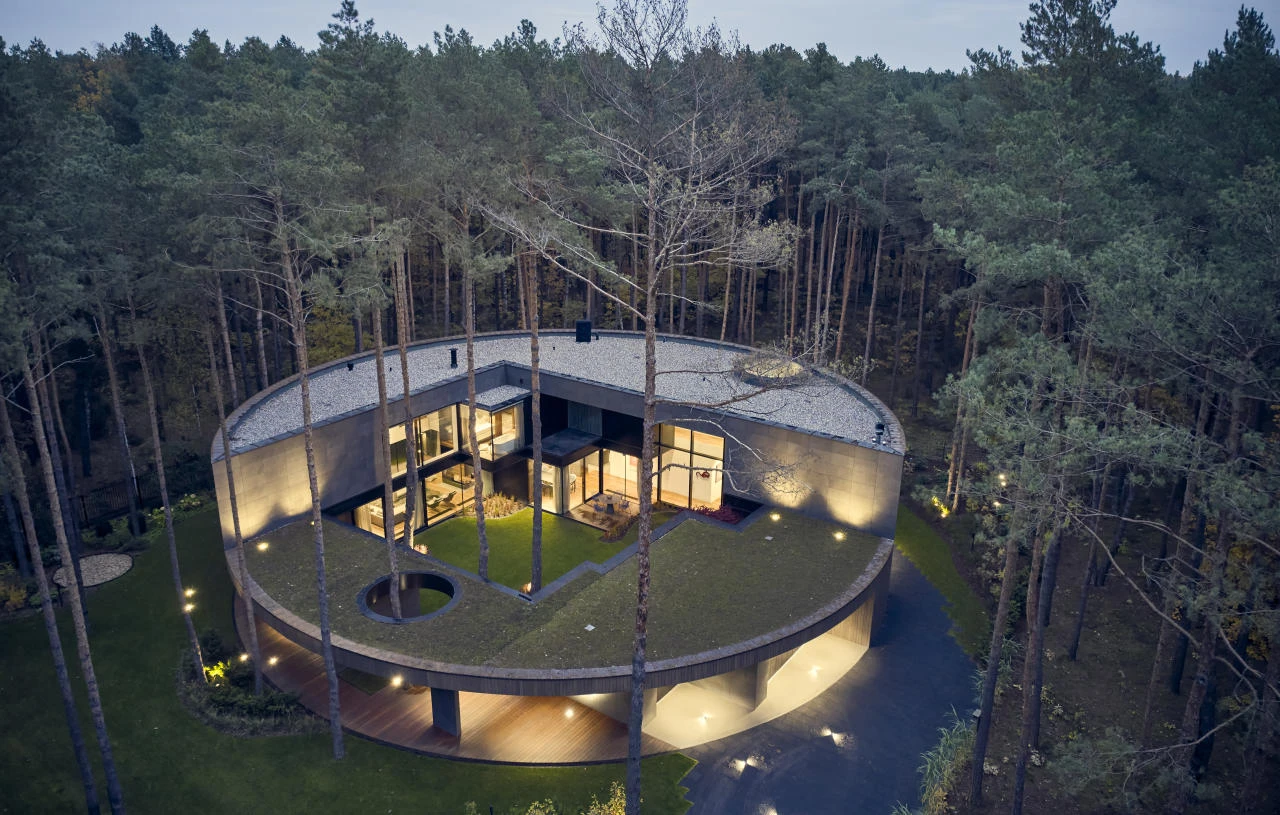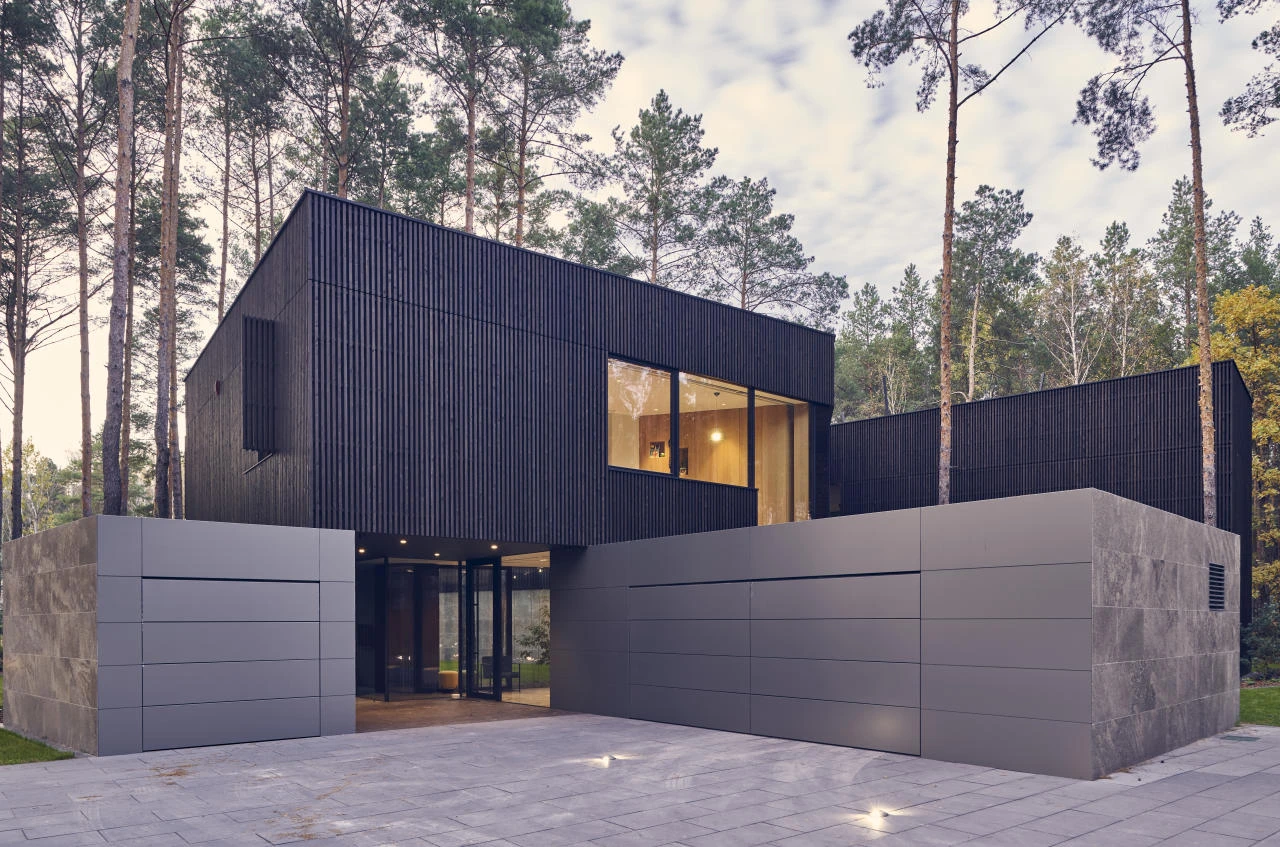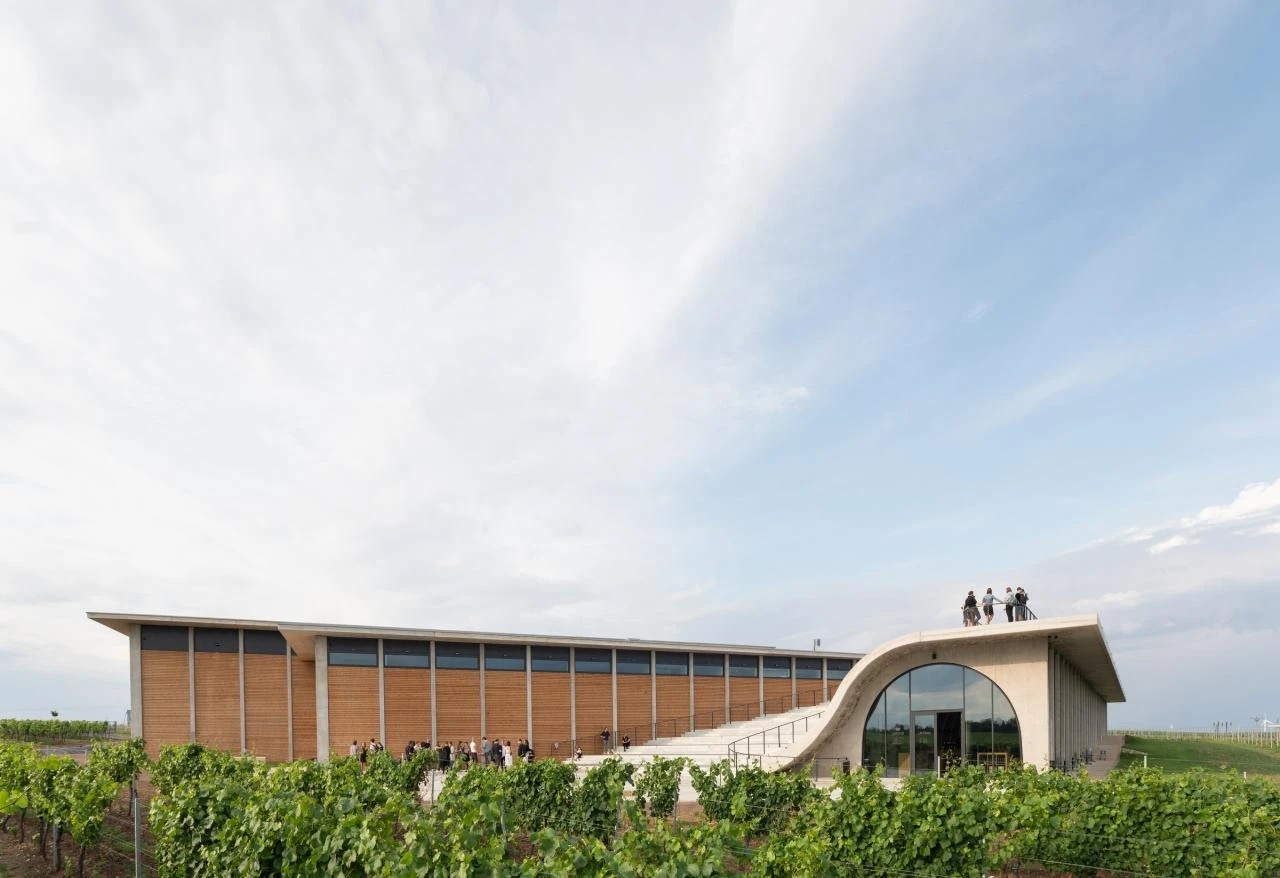The Future of Sustainable Construction - Biomaterials as the Key to Eco-Friendly Building

Circle Wood House, Izabelin, Poland. Applied Systems: MB-77HS, MB-SR50N
The growing awareness of the environmental impact of construction materials has driven an evolution in both the sourcing and use of organic materials in building processes. The result? We see an increased presence of building materials that can be recycled without loss (such as aluminum) as well as the introduction of new biomaterials in both new constructions and renovations.
Key features of building biomaterials
Building biomaterials are one of the fastest-growing trends in design. They are characterized by the use of organic raw materials such as:
- wood,
- sugarcane,
- straw,
- cotton,
- and even fungi and algae.
These biomaterials differ from traditional building materials, which often rely on non-renewable resources like steel or concrete. Beyond their renewability, biomaterials also boast a lower CO2 emission during production, a feature attributed to photosynthesis. In this process, plants absorb CO2 from the atmosphere to build their biomass, storing it, and releasing it back when they decompose. Compared to traditional materials, the CO2 balance is considerably smaller.
Renewable resources as the foundation of biomaterials
In the production of building biomaterials, special attention is given to utilizing renewable energy sources. The use of solar and wind energy significantly reduces the carbon footprint of material production. Additionally, biomaterials generally require less energy to process compared to conventional building materials.

Sara Kulturhus, Skellefteå, Sweden. Applied Systems: MB-86 SI, MB-SR50N, MB-SR50N OW
Aluminum as an eco-friendly building material
In addition to fully bio-based materials, aluminum represents a promising ally in sustainable construction. Though not organic, aluminum can be endlessly recycled, with reduced energy requirements during processing, enabling eco-friendly building practices. Recycling aluminum saves up to 95% of the energy needed to produce primary aluminum, yielding a product of equal quality.
Aluprof, a leader in aluminum systems for doors, windows, and façades, uses aluminum scrap in their ingot production, reducing greenhouse gas emissions from 16.7 tons of CO2e/t to 2.9 tons.
Notably, aluminum is a structurally stable material, offering greater durability than many biomaterials. High-insulation façade systems like Aluprof's MB-SR50N HI+ ensure low energy consumption throughout the building's life. Meanwhile, aluminum windows and doors in the MB-104 PASSIVE system meet all requirements for passive building elements.

Wind House, Izabelin, Poland. Applied Systems: MB-77HS, MB-SR50N
Examples of biomaterial-based constructions
What can we use as a biomaterial? Hempcrete, utilized since 1986, is gaining traction in both residential and commercial construction. Hemp grows rapidly, requiring minimal irrigation while absorbing as much CO2 per hectare as a forest. Notable buildings employing hempcrete include the Pierre Chevet Sports Center in France and the Regional House in Edegem, Antwerp, winner of the Brussels Architecture Prize 2023.
Researchers from INRAE Biopolymers, Interactions, and Assemblies (BIA) have developed a method to use cellulose fibers to stabilize emulsions of non-mixing liquids (water + oil), creating rigid panels with insulation properties superior to mineral wool or polystyrene.
Larixhaus is a prefabricated single-family home in Spain, utilizing locally sourced wheat straw as thermal insulation on the Costa Brava. The house is passive.
Organic resins can replace traditional epoxy resins containing harmful bisphenol A, using plant-derived polyphenols (tannins) from grape marc, a byproduct of wine production.
These examples are but a fraction of the scientific advancements in the building sector, which continuously seeks sustainable alternatives and refines technological processes to create more eco-friendly construction materials. Other biomaterials include sunflower fiber blocks, thread-like fungi particle boards, which can be used as agricultural fertilizers post-use, building panels from peanut shells, plastics from sugar beets, bamboo, coconut fibers, algae, and many others.

Let's Build a Better Future
The integration of biomaterials, investments in new forms of organic construction products, and advancements in material recycling processes are burgeoning trends in sustainable development. This is not a fleeting trend or fashion. Once we step away from traditional methods, it becomes apparent that for the continued survival of our planet and human habitation, sustainable building practices must prevail.
